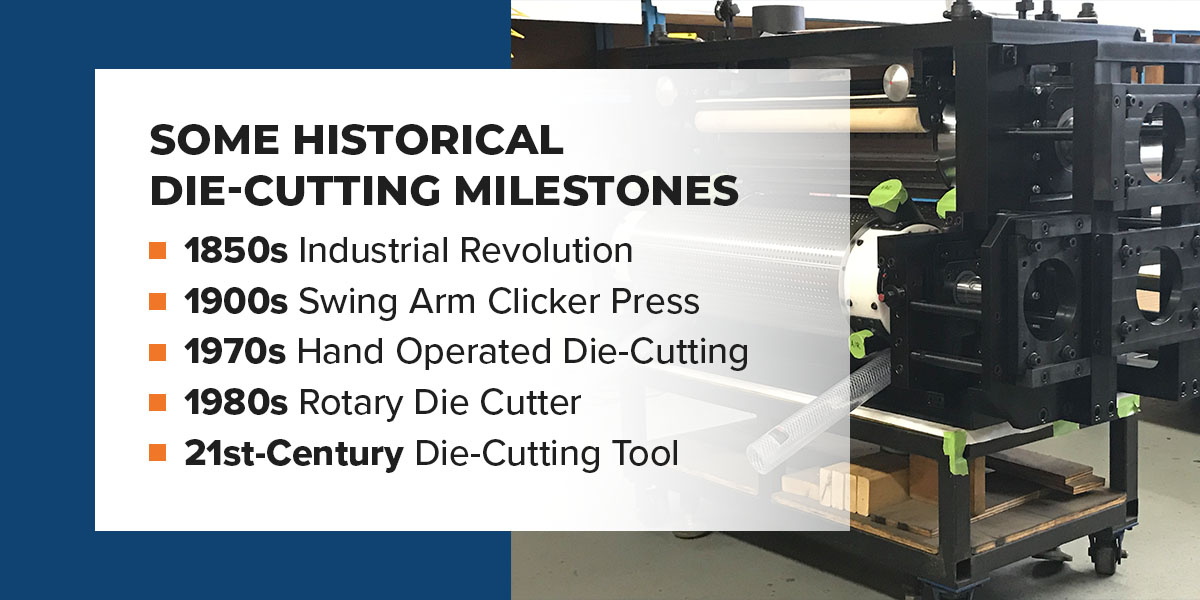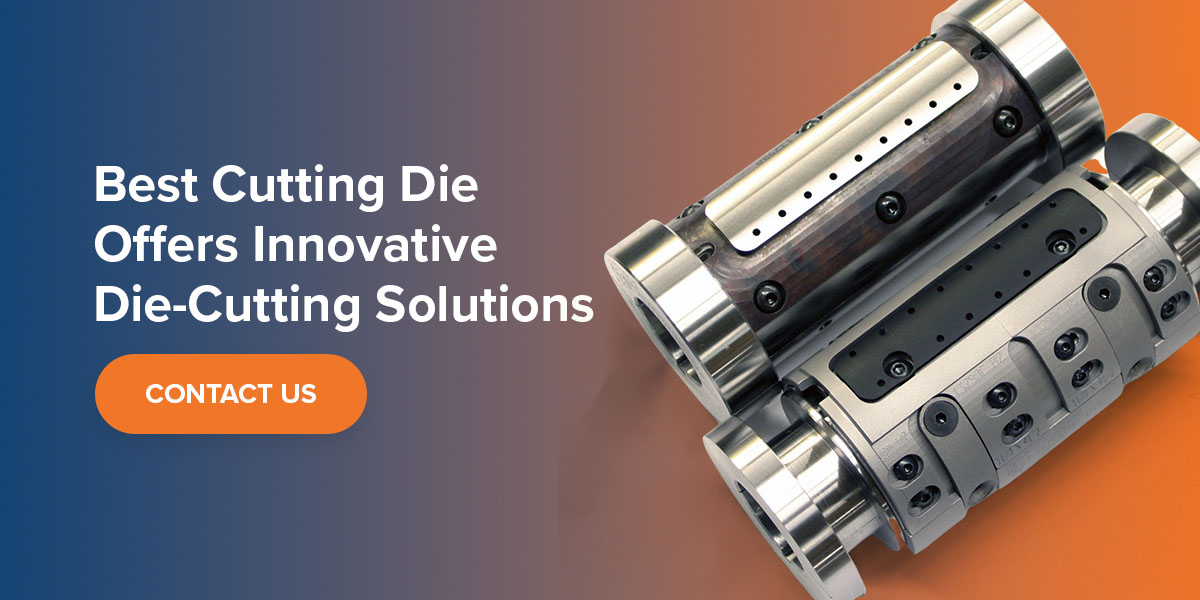The History of Die-Cutting
Today, the medical, automotive, textile and industrial manufacturing industries prioritize die-cutting tools. With the growing demand for die-cutting solutions, manufacturers must remain innovative. Innovative die-cutting features are cost-effective, long-term investments that offer enhanced product quality, high-performance operations and improved turnover and production volumes.
With numerous die-cutting advancements in automation, speed and materials, various industry applications have revolutionized and improved their manufacturing processes. Below is a brief history of die-cutting to help you learn more about this practice’s origins and where it’s in modern times.
Who Invented the Die-Cutting Machine?
As a practice, die-cutting has existed for over 1,000 years, so it’s hard to determine the very first inventor of the die-cutting machines used in ancient times. Some of the first modern die-cutting machines weren’t invented until the 1800s, when shoemakers needed a way to produce more shoes more quickly and efficiently.
These artisans used a mallet and die shape tool to cut through leather and etch out shoe soles. The mallet-handle machine initially used a roller system. It cut shapes from leather sheets, providing shoemakers with more uniform and consistent shapes.
Then, in the 1900s, die-cutting revolutionized with the additions of belt systems and the swinger arm clicker press. The additions aided in smaller and more compact die-cutting tools. It also made die-cutting less labor-intensive and efficient.
W. Richard Chesnut patented the rotary die-cutting machine design in 1980. A few years prior, in 1977, Bob and LaDorna Eichenberg created the first consumer die-cutting machine, which was operated by hand. It was initially used in classrooms to make cutting out shapes, numbers and decorations more efficient.
How Old Is Die-Cutting?
As stated in the previous section, die-cutting has been around for centuries. In ancient times, artisans used metal dies like iron and steel tools to stamp or engrave coins. They used bronze as the primary material for stamping coins. Die-cutting was an art and a time-consuming process, requiring unique technique and skill.
Artisans used the same die several times and would even sign them. After continuous use, the dies became worn, affecting the stamp consistency. Artisans engraved an estimated 15,000 coins before replacing a die.
Since the concept’s inception hundreds of years ago, die-cutting machines have advanced significantly. Here are some historical die-cutting milestones:

1850s Industrial Revolution
Prior to the Industrial Revolution, shoemakers cut out leather shoe components by hand. This method was time-consuming and yielded various inconsistencies. Die-cutting tools offered shoemakers an efficient leather-cutting method.
Shoemakers could convert leather into shoe components by striking a hammer and die tool into a leather sheet. As a result, shoemakers made more uniform designs with this new method. They also developed a technique for measuring shoe sizes at this time.
1900s Swing Arm Clicker Press
The swing arm clicker press was introduced in the early 1900s to enhance the mallet handle die cutter. The press tool uses a swing arm mechanism. Operators place a sheet-like leather into the press and push the die into materials to cut out shapes. The swinger press offers varying blade sizes for more standard forms. At this point, more industries started using die-cutting tools for multiple applications like packaging.
1970s Hand Operated Die-Cutting
Die-cutting machines became smaller and more compact, making them ideal for consumers. The Ellison LetterMachine die cutter was invented in the 1970s by Bob and LaDorna Eichenberg. Made for consumers, families and educators started using the LetterMachine at home and school for arts and crafts.
1980s Rotary Die Cutter
The rotary die-cutting machine was invented and patented by W. Richard Chestnut in 1980. Chestnut patented an apparatus for this machine a decade later.
The rotary die-cutting machine has cylindrical rollers that continue rotating on a horizontal axis. Rotary die cutters are ideal for cutting materials like paper, plastic, foam and metal. They offer full or partial and consistent cutting and make converting materials faster. As technologies and methods evolved over the subsequent years, manufacturers developed flexible and solid rotary dies.
21st-Century Die-Cutting Tool
Cutting dies advanced through the 21st century with enhanced safety, functionality and technology. Manufacturers can now automate the cutting die process with computerized systems. Modern computer-aided cutting die tools allow industries to improve production rates, track process capabilities and product quality control, and minimize errors.
Various die types have motion sensors and can switch off when they detect movement, improving operating safety. They can also cut and covert robust materials like steel and copper and withstand extreme heat and pressure. With innovative features, cutting dies can enhance process efficiencies and last many years. Manufacturers can use die-cutting tools for numerous industrial applications, such as:
- Cutting and shaping food products like biscuits.
- Cutting automotive components like gaskets and trim pipes.
- Cutting and shaping fabrics.
- Converting materials like plastic into consumer packaging.
- Cutting and shaping envelopes, credit cards and books.
- Manufacturing non-woven medical devices.
Why Work With Best Cutting Die
Best Cutting Dies has been creating innovative cutting-die since 1966. We’re pioneers in cutting die tools in the U.S. and continue reinventing the wheel. We make our cutting die in-house and provide high-quality die-cutting solutions. The best cutting die is dedicated to research and continuous improvement.
Our engineers are highly competent and experienced in cutting die technology, producing innovative features. We’re committed to engineering advanced cutting die to meet various industry needs. We continue to lead in developing and manufacturing premium cutting die solutions to exceed our customers’ expectations.

